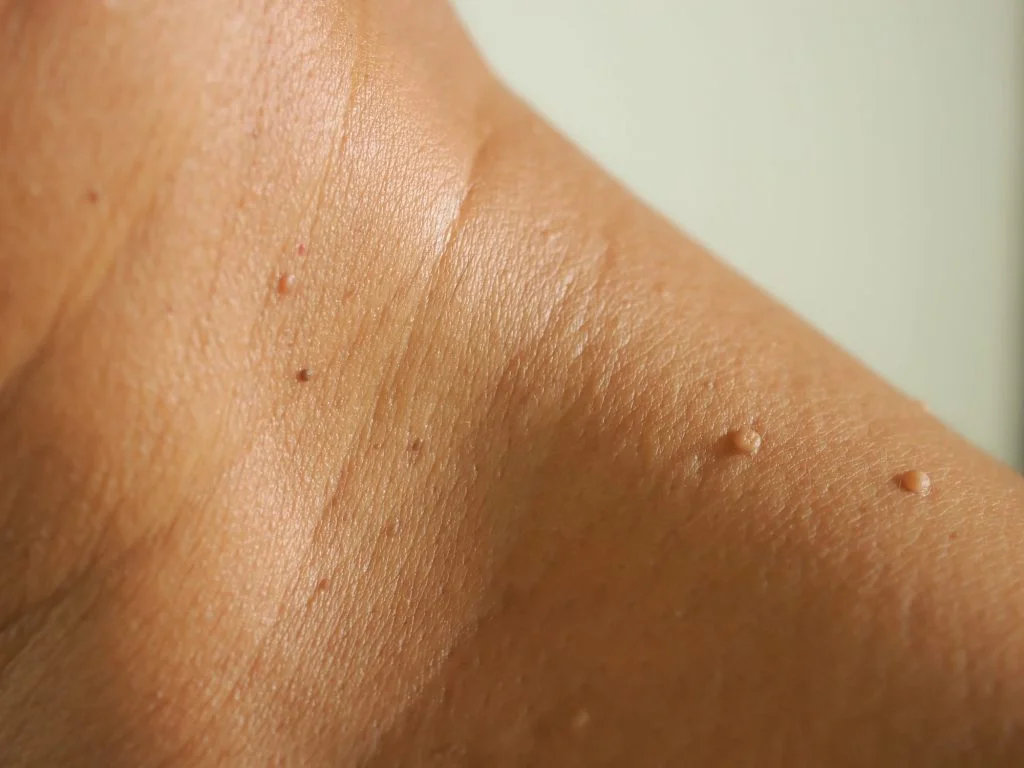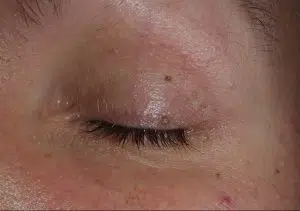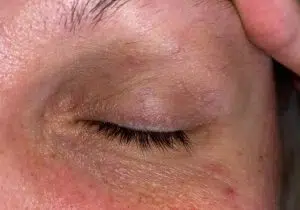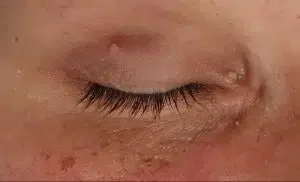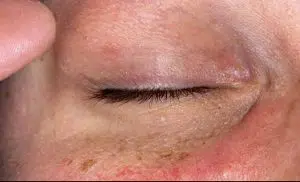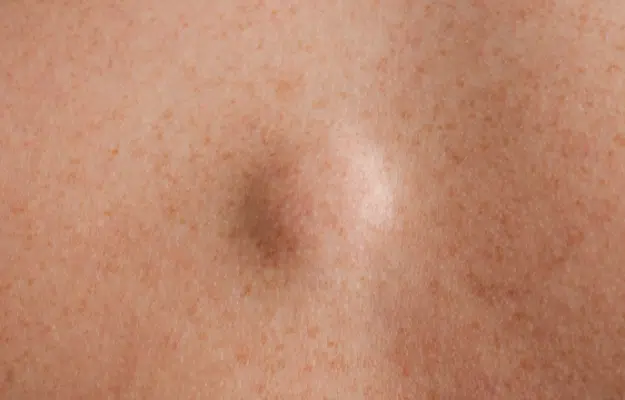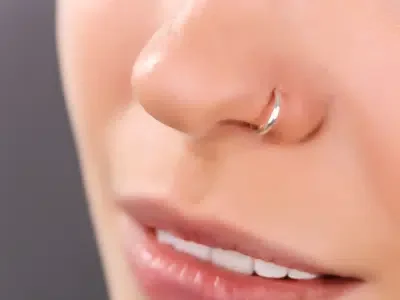Skin Tag Removal: London & UK
Sometimes our skin develops features that we might find unappealing or bothersome, even if they’re not harmful. One example is skin tags. While usually small, these can create cosmetic issues that many people would rather not have to deal with.
Did you know that between half and three-fifths of adults will get at least one skin tag during their lives? And once you’re over 40, the chances of getting one go up a lot. Skin tags are especially common among people who have diabetes, are overweight, or whose family members get skin tags too. It’s not just adults who get them – teenagers and even younger children are getting skin tags more often these days. If you’re looking to have a skin tag taken off, the Centre for Surgery in London is here to assist you.
At Centre for Surgery, we understand these concerns and are here to help. You don’t even need a referral from your general practitioner (GP) to see us. If you’re bothered by skin tags or similar minor skin issues, simply contact us directly, and we can discuss your options for removal or treatment. Our experienced team is here to assist you in addressing these problems so that you can feel more comfortable and confident in your appearance.
RELATED: Lumps and Bumps Removal – Minor Procedures at Centre for Surgery
What are Skin Tags?
Skin tags are small, benign growths made up of blood vessels and collagen, usually found within the folds of your skin. Surrounded by a thin layer of skin, they often appear flesh-coloured, though some might be black. These harmless protrusions hang off the skin by a small connecting stalk known as a peduncle.
Generally, skin tags are quite small, but they can grow to a few centimetres in size. Their texture may be smooth, grainy, or wrinkly, and they frequently develop in areas like the neck, eyelids, armpits, thighs, and under the breasts. However, they can appear on other parts of the body as well.
Small skin tags are tiny, just 1-2 mm, and often found under the shoulder or around the neck. Medium ones are about 5 mm long and can pop up anywhere on your body. Large skin tags are the noticeable ones that hang like a soft pouch, usually in places like the groin area.
Even though skin tags might start off small, sometimes no bigger than a couple of millimeters, they can grow to a hefty 1-2 cm. They don’t typically cause any pain, but they can be really irritating. We hear from many patients that their skin tags snag on necklaces, other jewellery, or clothing, causing itching or even bleeding. This is particularly true if the skin tag is in a spot that’s constantly being rubbed by clothes or sharp jewellery edges. That’s when getting a skin tag removed can be a huge relief.
Most of the time, skin tags are harmless and don’t require any medical treatment. In fact, some may fall or rub off naturally. If they do become bothersome or if you have cosmetic concerns about them, removal might be something you want to consider.
Anyone can develop skin tags, but in some cases, they might be an indication of underlying health problems, such as obesity or Human Papillomavirus (HPV). Even though skin tags are usually not a cause for worry, it can be wise to have them examined by a healthcare provider. Whether they are causing discomfort or not, getting them checked can help ensure that there are no underlying health issues that need to be addressed. If you do decide that you’d like to have them removed, medical professionals, like those at Centre for Surgery, can assist you with safe and effective removal procedures.
What Other Lesions Can Look Like a Skin Tag?
Options for Skin Tag Removal
You don’t have to remove every skin tag. If it’s not causing discomfort or annoyance, it might be perfectly fine to leave it as it is. There’s no medical reason to treat a skin tag unless it’s problematic for you.
However, if your skin tag is prone to bleeding, becomes irritated easily, or if its appearance is affecting your self-confidence, then it might be time to consider removal. At Centre for Surgery, we’re here to help you decide if it’s necessary to remove your skin tag.
Our skilled team of skin experts will examine your skin tag carefully, provide a precise diagnosis, and give you tailored advice on managing your skin concern. The removal procedure is straightforward and starts with an anaesthetic to ensure you’re comfortable. We use a variety of techniques to remove skin tags, depending on what’s best for you.
Skin Tag Removal Process
Skin tag removal is typically a quick and straightforward procedure, often completed in under 30 minutes. Since most skin tags are relatively small, anaesthesia is usually not required. However, if the skin tag is larger or if you have several skin tags, your doctor may use local anaesthesia to ensure that the procedure is painless for you.
Techniques
The removal method will depend on the size and location of your skin tag. It could be a surgical removal or another technique, which your doctor will discuss with you during your consultation. Rest assured, the approach will be tailored to your specific situation.
Here’s a closer look at the methods we might use:
Erbium YAG Laser
- What it is: A cutting-edge laser treatment that minimises thermal injury, often considered the gold standard for treating superficial skin lesions.
- How it works: The laser is efficiently absorbed by water, targeting the skin tag without harming the surrounding tissue.
- Histology testing: In most cases, this isn’t necessary, but if the doctor thinks it’s needed, they will discuss it with you, including any related costs.
Cryotherapy
- What it is: A popular method that involves freezing off the skin tag.
- How it works: Extreme cold is applied to the skin tag, freezing the cells and halting blood supply. A blister will form, scab, and eventually fall off over 7 to 10 days.
- Experience: You may feel mild pain or discomfort due to the cold, but the process is quick, lasting 5 to 10 minutes, and has a high success rate.
- Note: Our surgeons are qualified and trained in cryotherapy. It’s vital to have this done by a qualified surgeon, as improper application can damage surrounding skin.
Curettage and Cautery
- What it is: Used for larger lesions or ones that haven’t responded to cryotherapy.
- How it works: A sharp, spoon-like instrument called a curette is used to scrape off the skin tag. The wound is then sealed with heat.
- Experience: You’ll receive a local anaesthetic, and the wound will be left open to heal naturally, usually within two to three weeks.
Choosing the Right Method
The method we choose will depend on the size, location, and other characteristics of your skin tag. During your consultation, your doctor will explain the options and recommend the best approach for you.
Scarring
If the skin tags are very small, they should not leave any noticeable scarring. Larger skin tags might result in minimal scarring, but your doctor will provide you with guidance on caring for the scar. With proper care, any scarring should become virtually unnoticeable over time.
Recovery
One of the advantages of skin tag removal is that it requires minimal downtime. You should be able to return to work and your regular activities immediately after the procedure. The process is designed to be as convenient and minimally invasive as possible, allowing you to continue with your day without disruption.
We pride ourselves on providing expert care and personalised treatments. If you have any concerns about skin tags or are interested in removal, please don’t hesitate to get in touch with us. Our team is here to help you understand your options and guide you through the process to ensure a satisfying result.
Skin tag removal before and after
Case 1:
Case 2:
Skin Tag Removal in London – Why Choose Centre for Surgery
FAQs
-
What is a skin tag?A skin tag or papilloma is a small pedunculated lesion that protrudes from the surface of the skin. Skin tags are known to be entirely benign but are known to catch on items of clothing leading to discomfort. Whether they cause a functional disturbance or you are unhappy with their cosmetic appearance, skin tags can be quickly and safely removed.
-
Why do skin tags appear?Skin tags are little bits of skin that stick out, and they often start when skin rubs against itself. That's why people who are heavier may notice more of them, particularly in the folds of their skin where there’s more friction. If your family members get them, you might too. Pregnant women often get skin tags as well, but these usually go away after the baby is born.
-
What causes skin tags on the neck?The exact cause of skin tags is a bit of a mystery, but they might form when blood vessels and collagen get trapped inside a thicker bit of skin. Since your neck often has folds and creases, skin rubbing together there can lead to skin tags. For people with more weight around their neck and chest, it’s a common issue.
-
Do skin tags get bigger?Yes, skin tags can grow. They're not cancerous, but they can sometimes be mistaken for other growths that could be more serious. If you're ever unsure about a growth on your skin, it's a good idea to get it checked out. At Centre for Surgery, we can examine your skin tag closely and suggest the right treatment for you.
-
Can skin tags spread?Skin tags can pop up in multiple places, but they're not something you can catch from someone else or spread around your body. They're not contagious like warts. Whether you get more skin tags and where they appear can be down to the cause of the tags and whether you're naturally more likely to get them.
-
What is the best way to remove a skin tag?The best way to remove a skin tag depends on various factors, such as the size, location, and number of skin tags, as well as individual preferences and medical considerations. Here are some common methods used to remove skin tags, each with its unique advantages:
Surgical Excision: A surgeon can use a scalpel or scissors to cut off the skin tag. This method is precise and often used for larger skin tags. It may be done under local anaesthesia.
Cryotherapy: This involves freezing the skin tag using liquid nitrogen. It's a quick method that can be suitable for smaller skin tags or multiple growths. The frozen tissue falls off within 7 to 10 days.
Laser Treatment: An Erbium YAG laser can be used to remove skin tags by vaporising the tissue. This method is highly controlled and can minimise scarring.
Curettage and Cautery: A sharp instrument called a curette is used to scrape off the skin tag, followed by cauterisation to seal the wound. This may be used when a lesion is too large or hasn't responded to cryotherapy.
Ligation: This involves tying off the skin tag to cut off its blood supply, causing it to dry out and fall off.
Over-the-Counter Treatments: Some pharmacies offer creams or patches for home use that may work on smaller skin tags. However, the effectiveness of these products varies, and it's advisable to consult with a doctor before using them. -
Is it dangerous to remove skin tags?Trying to remove skin tags on your own can be risky. You could cause bleeding, infection, or even scarring, especially if you use tools that aren't sterile or if you try home methods. However, having a skin tag removed by a healthcare professional in a medical environment is safe. Remember, skin tags don't necessarily need to be removed, but if you're set on having one taken off, it's best to seek expert assistance.
-
Can you use ice to freeze off a skin tag?It might seem like a simple solution to numb a skin tag with ice and then try to remove it, but that's not really safe. You could end up damaging your skin. The professional way to freeze a skin tag is with cryotherapy at a doctor's office. They use a very cold substance called liquid nitrogen to do it quickly and with little discomfort.
-
Can you snip a skin tag with nail clippers?Definitely not. Using nail clippers to cut off a skin tag can lead to all sorts of problems like scarring, infection, and bleeding. Home remedies, such as apple cider vinegar, tea tree oil, and iodine, are not backed by scientific evidence and could be harmful. For safe and effective removal, it's better to contact a specialist. At Centre for Surgery, we can address your skin tag with the most up-to-date and effective treatments available.
-
Do skin tags grow back after removal?Skin tags themselves typically do not grow back once they have been removed. The removal process, whether through surgical excision, cryotherapy, laser treatment, or another method, eliminates the specific growth, and it usually does not reappear in the same spot.
However, it's essential to note that removing a skin tag does not prevent new ones from forming. If you are prone to developing skin tags, you may notice new growths in other areas of your body or even near the original location.
Certain factors may increase the likelihood of developing skin tags, such as genetics, obesity, hormonal changes, or underlying health conditions like diabetes. Identifying and managing these factors when possible may help reduce the occurrence of new skin tags. -
Will I get scars after skin tag removal?Scarring after skin tag removal is typically minimal or nonexistent, especially if the skin tag is small. The specific method of removal, the size and location of the skin tag, and your body's natural healing process will influence whether or not a scar forms.
Small Skin Tags: Small skin tags are often removed with methods that leave little to no trace, such as cryotherapy (freezing), laser removal, or snipping with surgical scissors. These methods usually don't cause scarring.
Larger Skin Tags: If a skin tag is more substantial, or if a more invasive method like surgical excision is used, there might be a minimal scar. The appearance of this scar can often be minimized with proper wound care and may fade over time.
Skilled Practitioner: Having the procedure performed by a skilled healthcare provider, such as a dermatologist or surgeon who is experienced in skin tag removal, will also minimize the likelihood of scarring. They will choose the best method for your particular situation and provide you with aftercare instructions.
Aftercare: Following the aftercare instructions closely, including keeping the area clean and avoiding picking at any scabs, will support healing and minimize scarring.
Individual Factors: Your skin type, age, and how your body heals can also influence scarring. Some people may be more prone to scarring due to their genetics or skin characteristics. -
Is skin tag removal painful?Both curettage and cautery will be performed under local anaesthetic, so pain and discomfort will be minimised. Your skin may be somewhat tender for a few days after the treatment. Cryotherapy does not require a local anaesthetic and will not be sore after the procedure.
-
Where on my body can I have skin tag treatment?You can have treatment anywhere on your body.
-
How much does skin tag removal cost?The cost of skin tag removal can vary widely based on several factors, and it's difficult to give a specific price without a detailed assessment by a medical professional. Here are some elements that can influence the cost:
Method of Removal: Different techniques for removing skin tags can have different costs. Simpler methods like freezing (cryotherapy) may be less expensive, while surgical removal or laser treatment might cost more.
Number and Size of Skin Tags: If you have several skin tags or particularly large ones, the procedure may be more complex and therefore more expensive.
Aftercare and Additional Treatments: If any follow-up appointments, medications, or additional treatments are needed, these could also impact the total cost.

